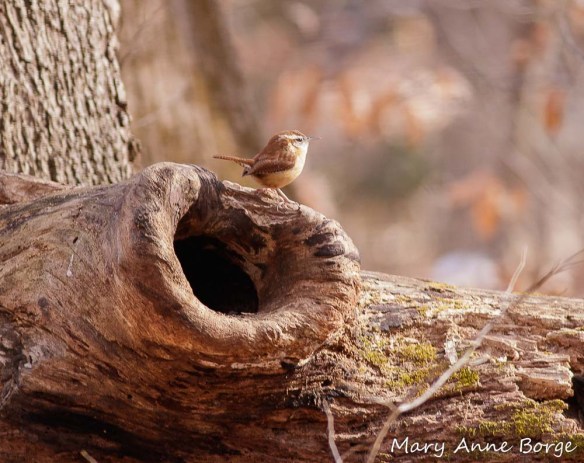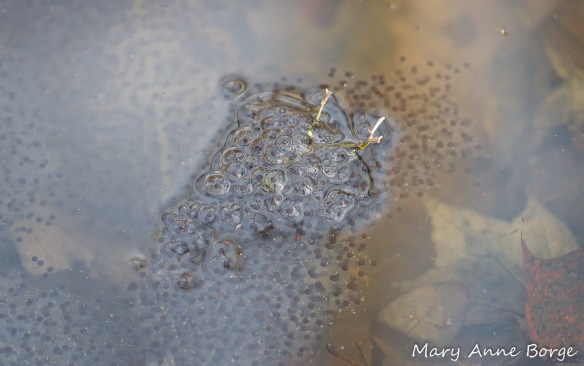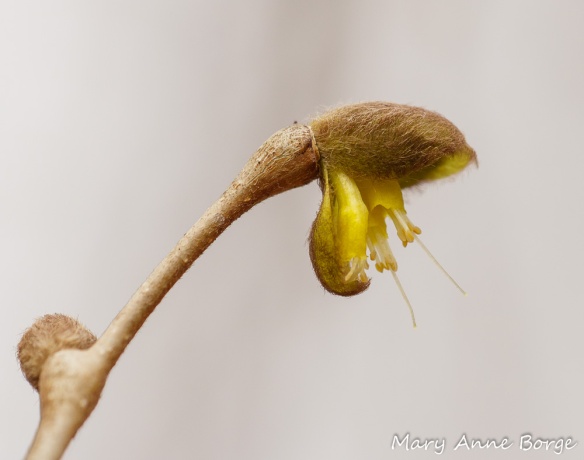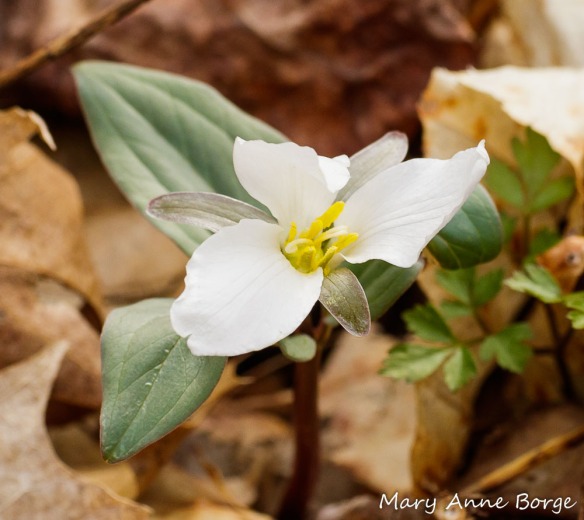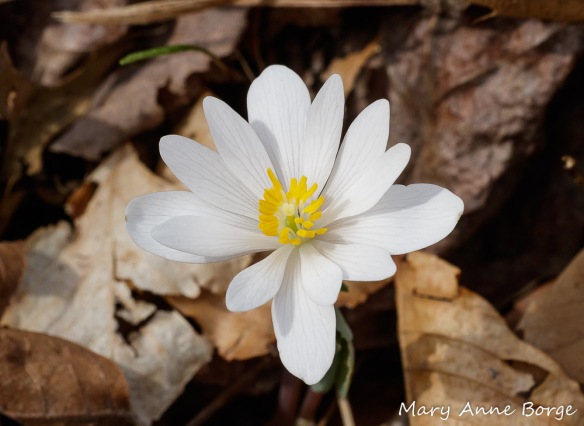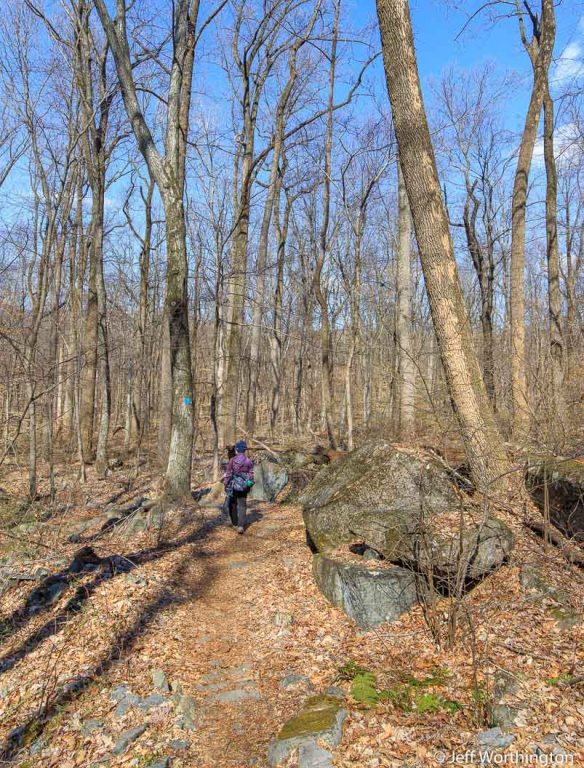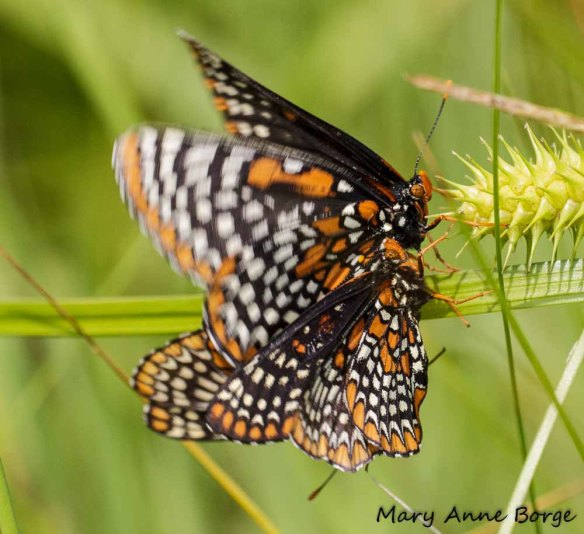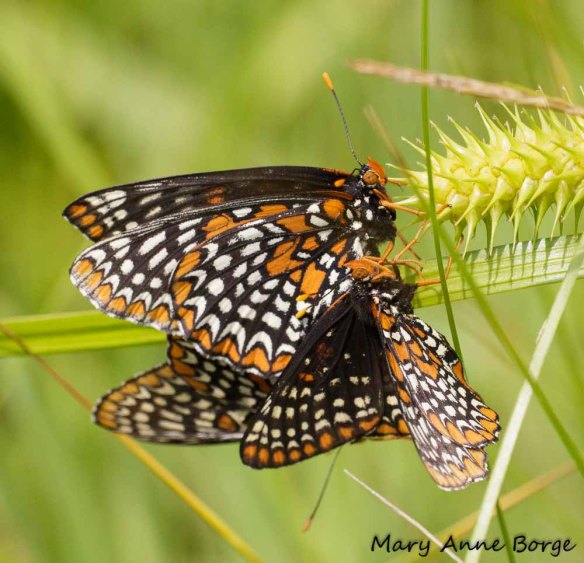One thing we can still do while keeping a safe distance from other humans during the Covid-19 virus outbreak is to go outside for a walk. It’s a great boost to your immune system, and contributes to an overall feeling of well-being. If you go for a walk in a natural area, it’s especially beneficial.
Life goes on for the other species in the world while we humans are focused on the virus. Here are some animals and plants you might see if you go for a walk in my neighborhood in the mid-Atlantic United States.
Every morning now I hear Wrens, Cardinals, Titmice and other birds singing. For several weeks Carolina Wren couples have been out shopping for real estate, looking for a good location to build a nest for the upcoming season. These birds nest in cavities, usually from three to six feet off the ground. A stump with a pre-made cavity like the one that the couple in the photos below is inspecting looks like very a very desirable property.
While walking in the woods, you might hear a chorus of male wood frogs calling from a vernal pool, or see a mass of eggs that resulted from successful wood frog mating.
When temperatures are warm, bees and some butterflies may be active. Even when spring temperatures are cooler, flies are active.

Greenbottle Fly (Lucilia sericata). This adult fly can be an effective pollinator, while its larvae are crime scene investigators’ friends, consuming dead rotting flesh or other decaying matter, a task that never goes out of season. The presence of these insects’ larvae can help determine time of death of a corpse.
Winter was unusually warm where I live in New Jersey. As a result, the spring bloom season is about 3-4 weeks earlier than normal. (This is a bit alarming, but since we have enough to worry about right now, I’m just going to focus on enjoying it.) With each passing day, more and more buds break and flowers bloom.
Leatherwood (Dirca palustris) is an early blooming shrub whose flower buds come with their own ‘fur’ coat, just in case the temperatures take a tumble. If the temperatures are warm, a lovely fragrance that even humans can detect wafts many feet away from the flowers. When the air temperature is cooler, you can still catch the fragrance if you bring your nose right up to a flower and sniff.
The sunburst-like flowers of Spicebush (Lindera benzoin) are blooming, beckoning pollinators to visit, and promising fruit for birds in the fall.
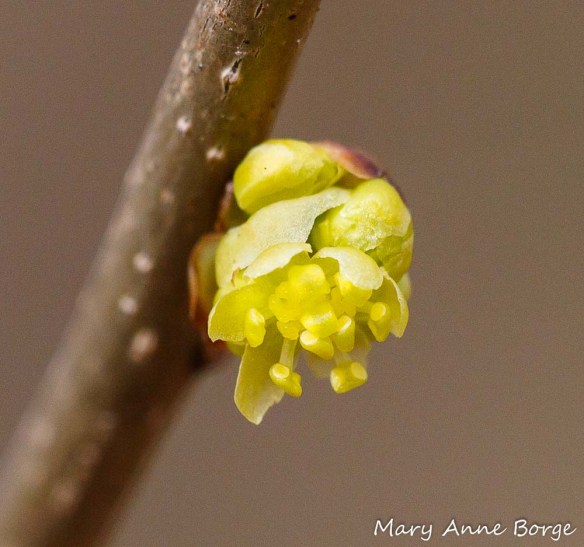
Spicebush (Lindera benzoin) blossom, male. Spicebush have male and female flowers on separate plants.
Hepatica, like Leatherwood, wears fur for warmth and to deter herbivores. Depending on where you live, two species are possible, Round-lobed Hepatica (Anemone americana syn: Hepatica nobilis obtusa, Hepatica americana) and Sharp-lobed Hepatica (Anemone acutiloba syn: Hepatica nobilis acuta, Hepatica acutiloba).
The earliest of the Trilliums to blossom, Snow Trillium (Trillium nivale), has entered its short bloom season. As you might guess, it is named for the fact that its flowers may open when snow is still present. The Latin name nivale means ‘snow white, or growing near snow’.
Bloodroot (Sanguinaria canadensis) has opened its blossoms, hoping for insect visitors to help it with cross-pollination, but if all else fails it will self-pollinate.
The lovely Dutchman’s Breeches (Dicentra cucullaria) is just starting to bloom, luring Bumble Bees to be their pollination facillitators. This plant’s delicate appearance gives no hint of its narcotic-packed foliage, a reliable deterrent to herbivores that would otherwise be tempted to eat it.
The first Spring Beauty (Claytonia virginica) flowers are open, the beginning of several weeks of a floral display from this species. There are specialist bees that depend on the pollen of this species as the only food that their larvae can digest. In return, these bees are very efficient and reliable pollination partners for Spring Beauty.
So many other species are waiting in the wings to be the next to bloom, including Virginia Bluebells (Mertensia virginica).
Everything changes so quickly in spring, from one day to the next and from morning until afternoon. Visit a natural area often so that you don’t miss anything. And to give your immune system a boost. You might even learn something! Just avoid people.
Related Posts
Dutchman’s Breeches and Squirrel Corn
Photo Locations
Bowman’s Hill Wildflower Preserve
Goat Hill Overlook, New Jersey
Rockhopper, New Jersey
Resources
National Wildlife Federation Educational Resources
US Forest Service Plant of the Week, Snow Trillium
Rhoads, Ann Fowler; Block, Timothy A. The Plants of Pennsylvania. 2007
Stearn, William T. Stearn’s Dictionary of Plant Names. 1996




